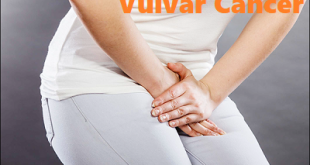What is Venous Leg Ulcer?
Venous leg ulcers, also known as stasis ulcers, are open wounds or sores that are chronic in nature (long-lasting). They can take months heal. If left unattended, these wounds increase in size with time. Venous leg ulcers occur on the skin of the lower leg (below the knee) and are commonly located just above the ankle, on the inner leg. Venous ulcers look like bleeding patches of skin with unevenly shaped borders and may or may not be painful. Venous leg ulcers are the most common types of leg ulcers.
Don’t confuse venous ulcers with diabetic foot ulcers and arterial ulcers. Diabetic foot ulcers are a serious complication of diabetes and are caused due to altered or complete loss of sensation in the leg (also known as peripheral neuropathy). Diabetic foot ulcers look like exposed flesh on the feet, surrounded by a border of thickened, coarse skin.
Arterial ulcers, on the other hand, develop because of damage to the arteries due to lack of blood flow to tissues. Arterial ulcers are usually located on the lateral surface of the ankle and they resemble an open sore that is often red, yellow, or black in colour.
What are the causes of Venous Leg Ulcers?
Venous Leg Ulcer happen after a minor injury if there is any blood circulation problem in the veins of your leg. Due to this, the pressure in the veins increases tremendously. Because of the increase in the pressure, the skin and the blood vessels undergo gradual damage. Venous ulcers happen when the veins from the leg don’t return enough Blood back to the heart.
The veins have valves which prevent the backflow of blood and make sure that the blood keeps flowing upwards to the heart. When the valves get damaged the blood can flow backwards which can create a blood pool. Due to the slow pace of blood flow, the blood can leak out to the surrounding tissues and can make the ulcer even worse.
Due to the increase in blood pressure and blood accumulation, it stops the nutrients and oxygen from reaching all the parts of the body. The lack of important nutrients causes the cells to die and the formation of a wound.
Who’s affected or at risk?
Venous leg ulcers affect around 1 in 500 people in Ireland. They become much more common with age.
It’s estimated around 1 in 50 people over the age of 80 has one.
You’re more at risk of developing a venous leg ulcer if you:
- previously had deep vein thrombosis (DVT)
- recently had an operation on your leg, such as a hip replacement or knee replacement
- have swollen and enlarged veins (varicose veins)
You’re also at risk if you find it difficult to walk because of a problem such as:
- osteoarthritis
- a leg injury
- obesity
- paralysis
What are the symptoms of a Venous Leg Ulcers?
The most common symptom of a venous leg ulcer is a wound that doesn’t heal and is irregularly shaped with dry, hard skin around the outside. Other symptoms include:
- swelling, especially around the ankle of your affected leg
- aching legs
- pain
- Clear discharge.
Venous leg ulcers are at risk of becoming infected because they’re slow to heal. Signs of an infected leg ulcer include:
- increased pain
- green, smelly discharge
- developing a temperature
- An increase in swelling and redness around the wound
Complications
A venous ulcer can lead to a variety of serious health problems, including:
- Loss of mobility: A venous leg ulcer can be painful and that can limit activity, which will make the condition worse.
- Infection: Venous ulcers can easily become infected. If the infected venous ulcer is not treated, it can lead to blood poisoning or an infection of the bone.
Diagnosing Venous Leg Ulcers
See your GP if you think you have a venous leg ulcer. The ulcer is unlikely to heal without specialist treatment. Diagnosis is largely based on your symptoms and examination of your affected leg, although additional tests may be required.
Medical history and examination
Your GP or practice nurse will ask whether you have any other symptoms associated with venous leg ulcers, such as:
- Swelling in your ankles
- Discoloured or hard skin
They’ll try to determine the cause of the ulcer by asking about underlying conditions or previous injuries, such as:
- Diabetes
- Deep vein thrombosis (DVT)
- Injury or surgery in the affected leg
- A previous leg ulcer
They’ll also examine your leg, both when you’re standing up and lying down. Varicose veins will be more obvious when you’re standing up, and it will be easier to look at the ulcer when you’re lying down.
They’ll also feel your pulse at your ankles to make sure the arteries in your leg are working properly.
Doppler study
To rule out peripheral arterial disease (a condition affecting the arteries) as a possible cause of your symptoms, your GP or nurse will carry out a test known as a Doppler study.
This involves measuring the blood pressure in the arteries at your ankles and comparing it to the pressure in your arms. If you have peripheral arterial disease, the blood pressure in your ankles will be lower than your arms.
It’s important to carry out this check as the main treatment for venous ulcers is compression bandages or stockings to improve the vein circulation in your legs. It’s not safe to apply compression if the ankle artery pressures are low.
Read more about how venous leg ulcers are treated.
Referral to a specialist
In some cases, your GP or nurse may decide to refer you to a specialist in conditions affecting the blood vessels (vascular specialist).
For example, you may be referred to a vascular specialist if your GP or nurse is unsure about your diagnosis, or if they suspect your ulcer may be caused by artery diseases, diabetes or rheumatoid arthritis.
Treatment and Recovery
Venous ulcers treatments includes controlling the high pressure in the leg veins and treating the ulcer.
Controlling Pressure in the Leg Veins
Controlling swelling is essential for patients with venous leg ulcers. Leg elevation, with the feet at or above the level of the heart, several times throughout the day and while sleeping, can help reduce swelling. Compression wraps or bandages are often applied to the legs. These can be changed as often as multiple times a day or as infrequently as once a week, depending on the amount of fluid draining from the ulcer. Once the leg ulcer is smaller or nearly healed, elastic compression stockings may be recommended. Compression stockings are sized to fit the legs and are typically put on in the morning and worn throughout the day. A venous pump may be prescribed for patients with severe swelling.
Treating the Ulcer
The first step in treating a venous ulcer is to remove any dead tissue around the sore and then to apply a special dressing to encourage healing. The dressing will need to be changed about once a week. Sometimes a compression stocking will be worn over top of the dressing. The first few weeks with a compression bandage on an ulcer are usually painful. Your doctor will prescribe and appropriate pain reliever. As the ulcer heals, the leg ulcer pain will lessen.
Surgery
Patients who have developed poorly healing sores in relation to their varicose veins require more advanced wound care and treatments. New varicose vein treatment options are minimally invasive, require minimal anesthesia and are safely performed in outpatient surgery centers or doctors’ offices. Treatment choices depend on the vein groups that are causing symptoms and can include:
- Endovenous ablation: This procedure can be done as an outpatient. A catheter is inserted into the great or small saphenous vein. After numbing medication is injected into the skin along the area of the vein to be treated, the vein is heated with radio waves or a laser. This heating process, or ablation, takes less than 10 minutes. The blood that used to pool in the treated superficial vein is naturally redirected into the deep vein system. Patients experience almost immediate relief. Patients are encouraged to walk immediately after the procedure. Pain, which is seldom severe, is managed with anti-inflammatory medications such as ibuprofen. A follow-up visit within a week after the procedure will check for any blood clots and medication may be prescribed to manage a clot.
- Ambulatory phlebectomy: This procedure to treat branch varicose veins can be performed in an office or as an outpatient. Patients are asked to stand for several minutes to allow the veins to fill, and the doctor marks the veins that are to be removed. Once the veins are marked and confirmed by the patient, numbing medication is injected into the skin along the course of the veins to be treated. Very small incisions, or nicks, in the skin are made and the veins are removed using a small hook. These incisions are so tiny that no stitches are needed. A dressing is placed on the leg, and patients are allowed to walk immediately after the procedure. Most patients do not require any pain medication, but when they do, anti-inflammatory medication is sufficient. Patients can return to work within a day or so, depending on the extent of the phlebectomy.
- Sclerotherapy: This procedure to treat branch varicose veins can be performed in an office or as an outpatient. Smaller veins are injected using a tiny needle containing a liquid that scleroses, or closes down, the vein. This treatment does not require any anesthesia or numbing medicine. Smaller veins (also known as spider veins) are best treated with this type of procedure.
What self-care can I do with a Venous Leg Ulcers?
Once treatment has started, venous leg ulcers can still take a few months to heal. You’re more at risk of developing another one if you don’t treat the underlying cause of the ulcer. Although some venous ulcers are unavoidable, there are a few things you can do to minimize your chance of developing one:
- Maintain a healthy weight
- Exercise regularly
- Eat a healthy diet
- Avoid sitting or standing for long periods
- Raise your feet as close to hip height as you can during the day to help with the return of blood flow to your heart.
Sometimes having varicose veins surgically treated can also help.
Can Venous Leg Ulcers be prevented?
There are several ways to help prevent developing a venous leg ulcer in people at risk. These include:
- Wearing compression stockings
- Losing weight if you’re overweight
- Exercising regularly
- Elevating your leg when possible
- Stopping smoking if you smoke
- These measures are particularly important if you previously had a leg ulcer.
- This is because you’re at increased risk of having another one in the same leg within months or years
 Diseases Treatments Dictionary This is complete solution to read all diseases treatments Which covers Prevention, Causes, Symptoms, Medical Terms, Drugs, Prescription, Natural Remedies with cures and Treatments. Most of the common diseases were listed in names, split with categories.
Diseases Treatments Dictionary This is complete solution to read all diseases treatments Which covers Prevention, Causes, Symptoms, Medical Terms, Drugs, Prescription, Natural Remedies with cures and Treatments. Most of the common diseases were listed in names, split with categories.







